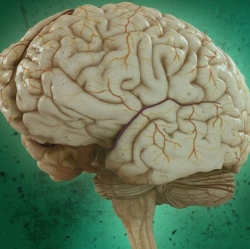
It is possible to inhibit the activity of pain-sensitive neurons using an agent that acts as a photosensitive switch, chemists at LMU Munich, in collaboration with colleagues in Berkeley and Bordeaux, have found.
The switch is a chemical compound they call QAQ. Irradiation with light of a specific wavelength causes the molecule to flip from a bent to an extended form; exposure to light of a different color reverses the effect.
One half of QAQ closely resembles one of the active analogs of lidocaine, a well-known local anesthetic used by dentists. Lidocaine blocks the perception of pain by inhibiting the action of receptors found on specific nerve cells in the skin, which respond to painful stimuli and transmit signals to the spinal cord.
The ion channel targeted by the lidocaine-like end of QAQ responds to heat by allowing positively charged sodium ions to pass into the cells that express it. This alters the electrical potential across the membrane, which ultimately leads to transmission of the nerve impulse.
Therapeutic applications of the principle are “a long way off,” says Timm Fehrentz, an LMU PhD student and one of the two equal first authors on the new paper. For one thing, the monochromatic light used to isomerize the QAQ molecule cannot penetrate human skin sufficiently to reach the pain-sensitive neurons. The researchers hope to address that problem by looking for alternatives to QAQ that respond to red light of longer wavelength, which more readily passes through the skin.
